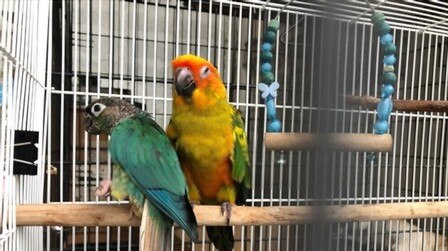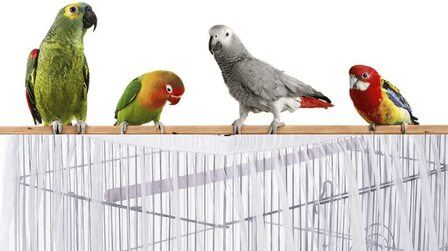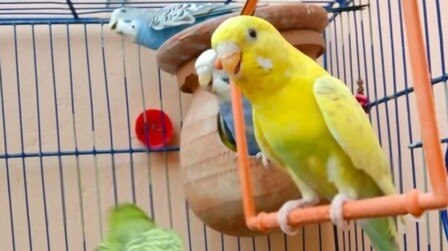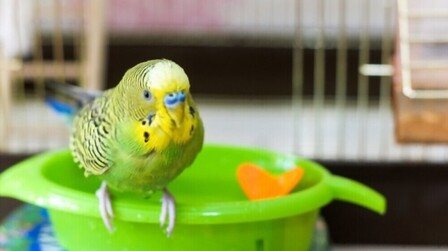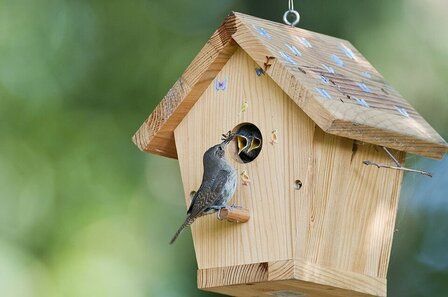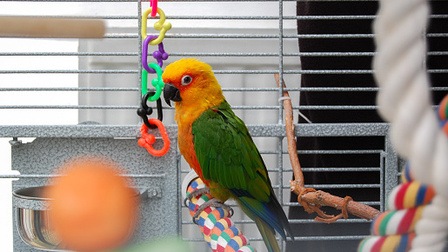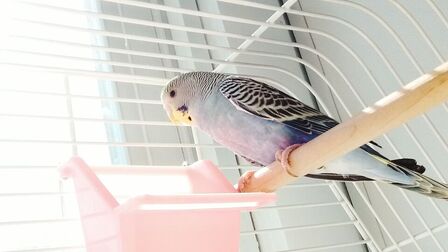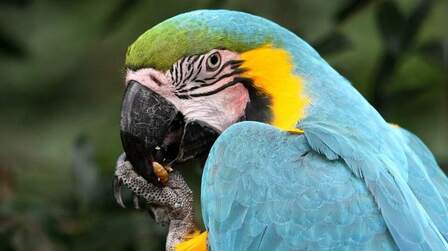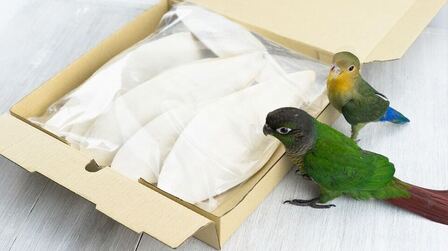The basics of owning birds are providing them with adequate living space. A birdcage is a place for birds to move freely.
With a variety of sizes, colors, and designs of bird cages. Although it is always difficult to choose the types of bird cages available, there are some simple guidelines for choosing different types of bird cages.
1. Types of bird cages
Powder-coated cage
Compared with stainless steel, powder-coated bird cages are less expensive and cannot be used for a long time. For extended service life, care must be taken and non-abrasive cleaning materials should be used.
Today, it is sold in a variety of sizes, shapes, and colors. But before buying, make sure it is non-toxic to avoid any casualties.
Stainless Steel Cage

With the ability to withstand daily wear and tear, stainless steel cages are easy to clean. And non-toxic, making them the ideal choice for all bird breeds, no matter how big or small it is.
While they are quite expensive, the initial investment is sure to pay off for years to come, make sure it's made from 100% premium solid stainless steel.
Plastic coated wire cage
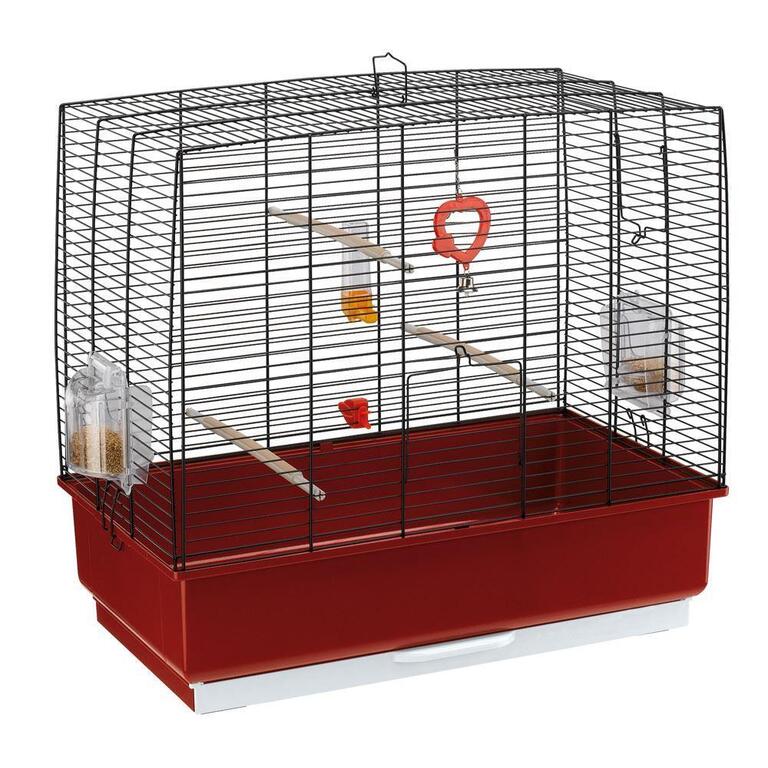
Similar to powder-coated cages, plastic-coated wire cages are also very pocket-friendly. But it can be toxic to some birds, especially macaws because they tend to gnaw on cage bars.
To be on the safe side that not a single piece of plastic has come off and to avoid exposing the toxic metal underneath, it should be checked from time to time. On the contrary, it comes with advantages. Not only is it easy to clean, but it's also very cost-effective and comes in a variety of sizes and styles.
These are some of the most popular types of bird cages on the market today. Or maybe they're a combination of these three.
2. Things to know before choosing types of bird cages
Birdcage accessories

You should buy lots of toys and levels to keep the birds entertained. When you are choosing a birdcage, make sure that when choosing a cage that allows you to access the birdcage from time to time. And some of the items that are popular bird toys include mirrors, bells, swings, and ladders. Over time, replacing them in and out is a good way to keep your bird happy and entertained.
In addition to toys, add a few extra perches to give the bird a few play areas. Look for some perches made from untreated branches from bird-friendly trees, like willows or hazelnuts. Birds often enjoy uneven branches because they allow exercise and nail trimming.
In the same place, it is necessary to arrange parking and toys or choose feeding dishes with the cage to ensure that it is compatible.
Make the birdcage sturdy
It is advisable to check that the ropes can withstand the wear and tear that birds put on them. Large birds, like macaws and parakeets, need very sturdy cages because they put more pressure on the cage. Metal cages will keep warm better than plastic cages.
At the same time, bar spacing is also something to include in the equation. Make sure the gap is not too wide for the birds to get through or get ahead or get their feet stuck between them.
Try that the cage doesn't give the bird a chance to pinch its feet or head in an exploratory mood, so choose a drop-in or swing-open cage.
Keep the birdcage clean
This is how to prolong the life of the birdcage. When choosing a birdcage, you should look for one that is easy to clean, with wipeable surfaces and drawers, trays, and nets that you can easily access and remove for cleaning.
There are still many cages that will have a net at the bottom to let bird waste pass through and the birds won't hang around in their carcass. If you are raising young birds, it is a good idea to put some padding in case they do somersaults. Newspaper and soft towels are an option.
Location

3. How to set up birdcages?
Choose a cage large enough for your bird
You don't want your bird to be cramped in a cage that's too small. Therefore, choose a cage that is at least twice as tall and twice as wide as the bird's wingspan.
Furthermore, there are many species-specific cages such as sparrows that often work well in a large cage where they have room to fly. As for parrots and cockatoos, they will feel stressed in a round cage, so a square or rectangular cage avoids stressing the pet.
Make sure the bars are properly spaced

If you don't measure the distance, the bird may get its head stuck in rods that are too far apart for their size or may escape and injure or kill itself.
In general, for small birds such as sparrows, canaries, and lovebirds, the bars are spaced no more than 0.63 inches (1.6 cm) apart.
For parakeets, lories, and Senegals, bars should be spaced between 0.5 inches (1.3 cm) and 0.88 inches (2.2 cm) apart. Large birds such as Africans, macaws, and macaws should have bars spaced between 0.75 inches (1.9 cm) and 1.38 inches (3.5 cm) apart.
Solid material
Birdcages are made of wire, metal, or stainless steel. There are still some cages that can rust or lose their finish over time, so choose stainless steel if you want something that can last for many years.
Avoid cages containing lead or zinc, which can be harmful to birds.
Birdcage bottom lining

You can place newspaper or paper towels along the bottom of the cage to catch feces and make cleanup easy. Use a cage with a net a few inches above the bottom of the cage to prevent birds from accessing the waste.
Always change the lining every other day and avoid using cat feces, sand, wood chips, or other materials on the bottom of the birdcage.
Put the food and water bowl in the cage

Some places sell dishes that hang on the sides of cages and are made for birds to perch on. It allows for easy filling of water and can be more convenient than placing a bowl at the bottom of the cage. Also, a water bottle can be used in place of or in addition to a water dish.
Add a birdbath
Be sure to give them a chance to bathe in the cage. Choose a short, heavy, sturdy bowl, fill it with warm water and place it on the floor of the cage, or purchase a birdbath that hangs on the side of the cage to prevent moisture from collecting on the floor of the cage.
Includes perching for the bird
Choose accessories to help the bird perch and give it plenty of time to enjoy. Provide the bird with perches of different heights, contours, and textures, and place them at different heights in the cage.
a thin wire perch in one corner.
Put toys safely in the cage
These are essential accessories for the cage, as they provide stimulation for the bird and keep them from getting bored including mirrors, ladders, swings, and bells. Alternatively, you can also place wooden, plastic, or rope toys in the cage for the birds to play and nibble on.
Especially frequently wash bird toys with mild soap and warm water. Drain them thoroughly and let them air dry completely before returning them to the cage.
Avoid dangerous toys
Some toys you should avoid are dyed leather and toys with "S" hooks or small removable parts that can be swallowed. The "jingle" style bell is not safe because the bird's toes or beak can get stuck in the openings.
Avoid placing overloaded toys in the cage. Instead, rotate them regularly.
Conclusion
Above is some information related to you choosing different types of bird cages and the first things you need to know that we have shared before you buy bird cages.
Hopefully, this information will assist you in choosing the best birdcage.





